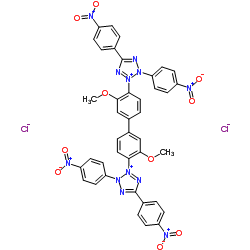An in situ cell marker for clonal analysis of development of the extraembryonic endoderm in the mouse.
R L Gardner
Index: J. Embryol. Exp. Morphol. 80 , 251-88, (1984)
Full Text: HTML
Abstract
Conditions were found for staining whole mid-gestation capsular parietal endoderms and visceral yolk sacs for malic enzyme activity that gave excellent discrimination between wild-type (Mod-1+/Mod-1+) cells and mutant (Mod-1n/Mod-1n) cells that lack the cytoplasmic form of the enzyme. Reciprocal blastocyst injection experiments were undertaken in which single primitive endoderm cells of one genotype were transplanted into embryos of the other genotype. In addition, Mod-1+/Mod-1+ early inner cell mass (ICM) cells were injected into Mod-1n/Mod-1n blastocysts, either in groups of two or three singletons or as daughter cell pairs. A substantial proportion of the resulting conceptuses showed mosaic histochemical staining in the parietal endoderm, visceral yolk sac, or in both these membranes. Stained cells were invariably intimately intermixed with unstained cells in the mosaic parietal endoderms. In contrast, one or both of two distinct patterns of staining could be discerned in mosaic visceral yolk sacs. The first, a conspicuously 'coherent' pattern, was found to be due to endodermal chimaerism; the second, a more diffuse pattern, was attributable to chimaerism in the mesodermal layer of this membrane. The overall distribution of cells with donor staining characteristics resulting from primitive endoderm versus early ICM cell injections was consistent with findings in earlier experiments in which allozymes of glucosephosphate isomerase were used as markers. The conspicuous lack of phenotypically intermediate cells in predominantly stained areas of mosaic membranes suggested that the histochemical difference between Mod-1+/Mod-1+ and Mod-1n/Mod-1n genotypes was cell-autonomous. This conclusion was strengthened by the results of staining mixed in vitro cultures of parietal endoderm in which presence or absence of phagocytosed melanin granules was used as an independent means of distinguishing wild type from null cells. By substituting tetranitro blue tetrazolium for nitro blue tetrazolium in the incubation medium, satisfactory differential staining was obtained for both the extraembryonic endoderm and other tissues of earlier postimplantation wild type versus null embryos. Finally, absence of cytoplasmic malic enzyme activity does not appear to have a significant effect on the viability or behaviour of mutant cells.
Related Compounds
| Structure | Name/CAS No. | Molecular Formula | Articles |
|---|---|---|---|
 |
Tetranitroblue tetrazolium (TNBT)
CAS:1184-43-6 |
C40H28Cl2N12O10 |
|
P5-2 of rice black-streaked dwarf virus is a non-structural ...
2015-05-01 [Arch. Virol. 160(5) , 1211-7, (2015)] |
|
Fabrication of mechanically robust, self-cleaning and optica...
2015-08-14 [Nanoscale 7 , 13125-34, (2015)] |
|
Reduced excitability of gp130-deficient nociceptors is assoc...
2014-11-01 [Pflugers Arch. 466(11) , 2153-65, (2014)] |
|
Structure of motor nerve terminals in chickens with heredita...
1985-09-01 [Muscle Nerve 8(7) , 568-75, (1985)] |
|
Quantitative aspects of the histochemical tetrazolium salt r...
1985-06-01 [Histochem. J. 17(6) , 707-15, (1985)] |